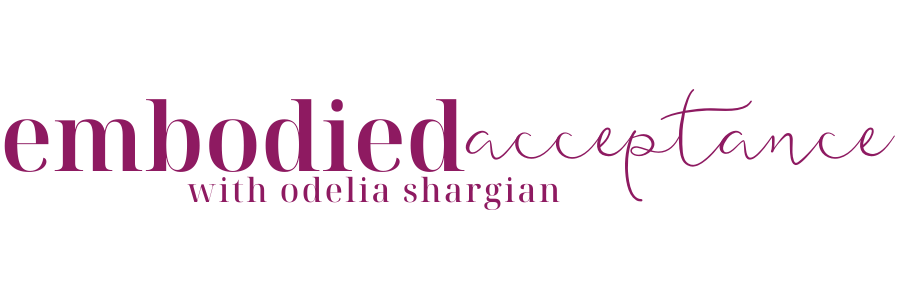The missing piece of the puzzle in combating body shame
Do you ever feel like different parts of your existence, like your mind and your body, are not necessarily working together? Or maybe there's a big imbalance between the two and you spend much more time in your head, disconnected from your feelings and sensations?
In my last email, I shared the big news of my rebrand under the new name Embodied Acceptance.
Some of you are familiar with this name because that’s what I called one of my new recent offerings. I will still be offering this workshop but the big news is that everything else that I do is also going to go under this name moving forward.
I wanted to share a little bit about my journey around this name. Today I’ll focus mostly on the “Embodied” part.
The dictionary definition of embodiment is “the representation or expression of something in a tangible or visible form”.
The first time I came across this word in the context of movement was in my Shake Your Soul® teacher training. SYS is largely based on a somatic practice called Body-Mind Centering® (BMC®) which “is an integrated and embodied approach to movement, the body and consciousness. Developed by Bonnie Bainbridge Cohen. Its uniqueness lies in the specificity with which each of the body systems can be personally embodied and integrated”.
In essence what this means is that our different body systems, our organs and even our cells have a consciousness of their own and we can have a direct experience of every part of the body by taking on its essence or its unique qualities.
We can experience our cellular self, we can experience our lungs, we can experience our blood or any of our body fluids by moving the way it does which is essentially what we do in SYS. All of the movements in class are aimed at embodying the different fluids in our bodies.
More generally embodiment means inviting the possibility of including our whole self in our experience, including our body in all it’s parts, our emotions and our thoughts.
Because of societal conditioning, most of us are mostly connected to our thinking minds and the other parts are largely missing. The body is not a separate thing. It works together with the mind. But the way that we live our lives, it’s often disconnected. We can connect the mind and body through somatic practices. Living an embodied life means living a life where the body and the emotions are as much a part of the experience of the self as the mind.
Embodied Acceptance, therefore, means that we not only know in our rational mind that we get to accept ourselves no matter what, but that we actually experience that acceptance directly through the body, in our cellular consciousness.
What’s most cool about this brand name journey is that when I first started reading about body image work I came across the word embodiment again. The term that kept coming up was “positive embodiment” which comes to replace the term “positive body image”. When I came across “embodiment” again in this specific context that was a strong sign that my work lies here: in combining body acceptance work with movement and body awareness.
In this context, it became clear that the term “positive embodiment” is a more accurate way of describing body acceptance than the term “positive body image”. “Body image” represents something that is determined by what we think others think about us vs. “positive embodiment” which means experiencing ourselves from the inside in a favorable way. This is not only more important than the outside perspective on us but it also depends solely on our ability to connect to what our body can do through sensing and feeling.
Embodied Acceptance is therefore the perfect way to combine the idea of body acceptance work and embodiment work which as I said before is the missing piece in the puzzle when it comes to combating body shame.
